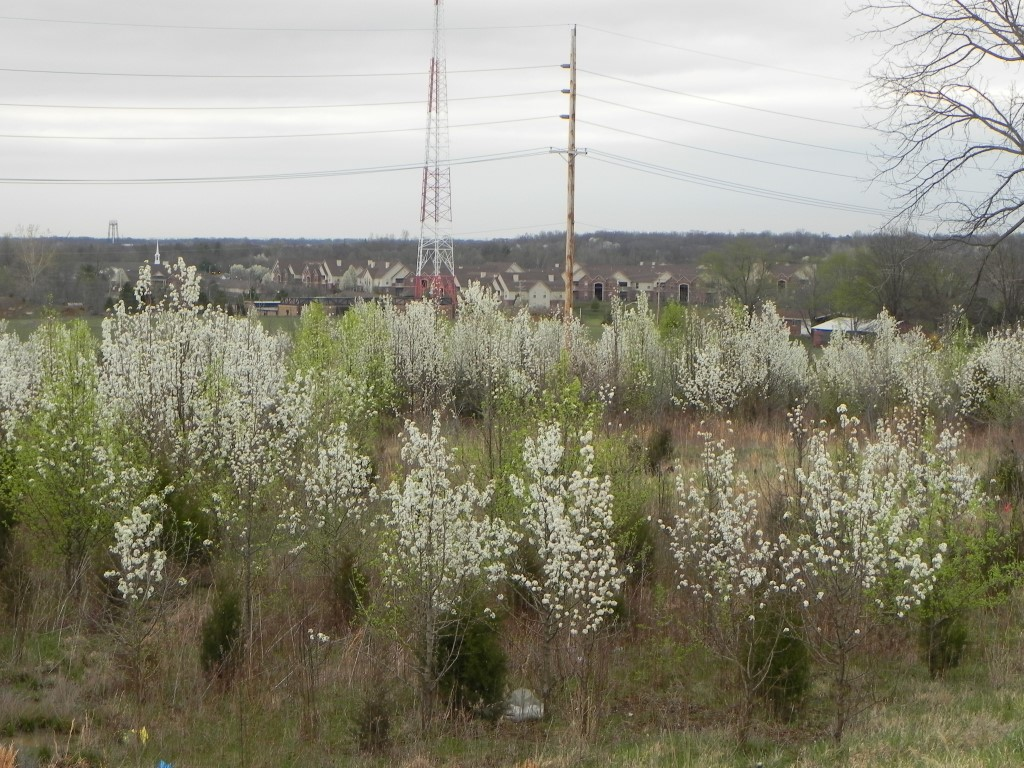
Ornamental Pear Tree Info & Removal
Callery pear (Pryus calleryana) is a medium-sized, rapid growing, deciduous tree in the rose family (Rosacea) that was introduced to the US from Asia in the early 1900s. The ‘Bradford’ and ‘Chanticleer’ pear are some of the common cultivars.
These and other cultivars have been commonly used as ornamentals due to their showy white flowers in early spring and colorful fall foliage. Originally thought to be sterile, we now know these cultivars can cross-pollinate and produce fertile fruit, which is eaten by birds, who then disperse the seeds widely. Callery pear readily colonizes both disturbed sites and natural areas alike, forming dense thickets. Despite being ranked as a highly invasive plant species, it is still used across the state as an ornamental tree in landscaping and sold at nurseries.
Removal & Control of Callery Pear Trees
Prevention (Most important!) - The first priority to limit the spread is to stop the use of Callery pear or any of the cultivars in ornamental landscape plantings and remove it from any existing intentional plantings.
Manual (Dig it up) - Seedlings can be pulled when soil is moist, however, Callery pear roots are long and very strong and are difficult to remove. All portions of the root must be removed for effective control. Unless completely uprooted, herbicides will be needed. Since Callery pear is a vigorous resprouter, mowing is not an effective control method. Bag and dispose of fruit as solid waste or burn.
Take Action, Get a Free Replacement Tree*
Residents of Bartholomew County can remove an invasive Callery Pear tree (either themselves or by using one of our tree removal partners), fill out our form, and receive a free replacement tree in the fall.
To receive a free replacement tree, you must properly treat the tree after cutting. Learn more about proper removal here.
You will be contacted by Bartholomew County Soil & Water regarding your replacement tree upon completing the form.
*free trees available to the first 20 people who cut down an ornamental pear tree and provide proof of removal.


